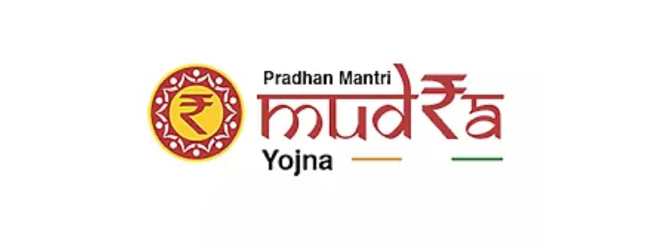Table of contents
- Why Choose a Government Subsidy Loan?
- 1. Pradhan Mantri Mudra Yojana (PMMY)
- 2. Credit Guarantee Fund Trust for Micro and Small Enterprises (CGTMSE)
- 3. Pradhan Mantri Employment Generation Programme (PMEGP)
- 4. National Small Industries Corporation (NSIC) Schemes
- 5. Startup India Seed Fund Scheme
- 6. Stand-Up India Scheme
- Navigating the Application Process
- Conclusion
- Frequently Asked Questions (FAQs)
Starting or expanding a business in India often requires significant financial backing. Fortunately, the Indian government offers a range of government subsidy loan for business schemes designed to provide this crucial support. These initiatives aim to encourage entrepreneurship, boost economic growth, and create employment opportunities. Understanding these schemes can be a game-changer for aspiring and existing business owners.
This article dives into six of the best government subsidy loan schemes available for businesses in India. We’ll break down each scheme, highlighting its key features and benefits in a simple and easy-to-understand manner.
Why Choose a Government Subsidy Loan?
Before we delve into the specific schemes, let’s understand why a government subsidy loan for business can be advantageous:
- Lower Interest Rates: One of the primary benefits is often the reduced interest rates compared to conventional loans. This can significantly lower your repayment burden.
- Financial Assistance: These schemes provide much-needed capital for various business needs, from setting up infrastructure to working capital.
- Collateral-Free Options: Some schemes offer the advantage of loans without requiring collateral, making it easier for new entrepreneurs to access funds.
- Promoting Specific Sectors: Many schemes are designed to promote specific sectors, such as manufacturing, agriculture, and small-scale industries, offering tailored support.
- Encouraging Entrepreneurship: By providing financial support, the government actively encourages individuals to start their own businesses, fostering innovation and self-reliance.
1. Pradhan Mantri Mudra Yojana (PMMY)

The Pradhan Mantri Mudra Yojana (PMMY) is a flagship scheme aimed at providing financial support to non-corporate, non-farm small and micro-enterprises. It’s a popular government subsidy loan for business, particularly for startups and small businesses.
Key Features:
- Loans are offered under three categories:
- Shishu: Loans up to ₹50,000.
- Kishore: Loans ranging from ₹50,001 to ₹5,00,000.
- Tarun: Loans ranging from ₹5,00,001 to ₹10,00,000.
- These loans are typically provided by banks, NBFCs, and MFIs.
- No collateral is generally required for loans under the Shishu and Kishore categories.
- The interest rates vary depending on the lending institution and the borrower’s credit history.
Benefits:
- Provides access to finance for even the smallest of businesses.
- Empowers women entrepreneurs as a significant portion of MUDRA loans are disbursed to them. For instance, as of March 2024, over 68% of MUDRA loan beneficiaries were women.
- Encourages the formalisation of the micro-enterprise sector.
Example: A woman starting a small tailoring business can avail a Shishu loan to purchase sewing machines and raw materials.
2. Credit Guarantee Fund Trust for Micro and Small Enterprises (CGTMSE)
The Credit Guarantee Fund Trust for Micro and Small Enterprises (CGTMSE) provides guarantee cover to lenders for extending loans to Micro and Small Enterprises (MSEs). While it doesn’t directly provide loans, it encourages banks and financial institutions to lend to MSEs without stringent collateral requirements, making it a crucial enabler for accessing a government subsidy loan for business.
Key Features:
- Provides guarantee cover for loans up to ₹2 crore.
- The guarantee covers a significant portion of the loan amount, reducing the risk for the lender.
- Both new and existing MSEs are eligible.
- The guarantee fee is paid by the borrower and/or the lending institution.
Benefits:
- Facilitates easier access to credit for MSEs, especially those without substantial collateral.
- Reduces the burden on MSEs to provide security for loans.
- Encourages banks to lend more actively to the MSE sector.
Example: A small manufacturing unit looking to upgrade its machinery can secure a loan from a bank under the CGTMSE scheme, even if it lacks significant fixed assets as collateral.
3. Pradhan Mantri Employment Generation Programme (PMEGP)
The Pradhan Mantri Employment Generation Programme (PMEGP) is a credit-linked subsidy scheme aimed at generating employment opportunities in rural and urban areas of India. It facilitates entrepreneurs in setting up new manufacturing units and service ventures. This scheme offers a direct government subsidy loan for business. For more information about PMEGP, Click Here
Key Features:
- Provides financial assistance for setting up new projects.
- The subsidy component varies based on the category of the beneficiary and the location of the project (rural/urban).
- For general category beneficiaries, the subsidy is 15% of the project cost in urban areas and 25% in rural areas.
- For special category beneficiaries (including SC/ST/OBC/Minorities/Women, Ex-servicemen, Physically handicapped, NER), the subsidy is 25% in urban areas and 35% in rural areas.
- The maximum project cost for manufacturing units is ₹50 lakh and for service sector units is ₹20 lakh.
Benefits:
- Reduces the initial investment burden on entrepreneurs through the subsidy component.
- Creates employment opportunities, especially in rural and backward areas.
- Encourages the setting up of new enterprises.
Example: A group of individuals in a rural area can set up a food processing unit under PMEGP, availing a higher subsidy due to their location and potentially their social category.
💡 Pro Tip: If you want to start a business but have too many doubts, connect with a business expert from Boss Wallah for guidance – Check Out
4. National Small Industries Corporation (NSIC) Schemes
The National Small Industries Corporation (NSIC) offers a range of schemes to support the growth of Small Scale Industries (SSI). While not all are direct loan subsidies, they facilitate access to finance and provide other crucial support, indirectly aiding in securing a government subsidy loan for business.
Key Features (relevant to finance):
- Raw Material Assistance Scheme: Helps SMEs finance the purchase of raw materials.
- Bill Discounting Scheme: Provides short-term working capital finance against the bills raised by SMEs.
- NSIC also facilitates access to credit through tie-ups with various banks.
Benefits:
- Ensures timely availability of raw materials.
- Improves the working capital cycle for SMEs.
- Streamlines the process of obtaining loans through NSIC’s partnerships with financial institutions.
Example: A small plastic manufacturing unit can utilise the Raw Material Assistance Scheme to procure the necessary polymers, ensuring uninterrupted production.
5. Startup India Seed Fund Scheme

The Startup India Seed Fund Scheme aims to provide financial assistance to startups for proof of concept, prototype development, product trials, market entry, and commercialisation. This is a specific government subsidy loan for business focused on the burgeoning startup ecosystem.
Key Features:
- Provides seed funding to eligible startups through selected incubators.
- The fund disburses up to ₹5 crore per incubator.
- Startups can receive up to ₹20 lakh as a grant for validation of proof of concept, prototype development, or product trials.
- Startups can receive up to ₹50 lakh as convertible debentures or debt-linked instruments for market entry, commercialisation, or scaling up.
Benefits:
- Provides crucial early-stage funding that is often difficult for startups to secure.
- Supports the translation of innovative ideas into viable businesses.
- Boosts the startup ecosystem in India.
Example: A tech startup with a promising AI-based solution can receive seed funding to develop a working prototype and conduct initial market trials.
6. Stand-Up India Scheme
The Stand-Up India Scheme aims to promote entrepreneurship among women and Scheduled Castes (SC) & Scheduled Tribes (ST). It facilitates bank loans between ₹10 lakh and ₹1 crore to at least one Scheduled Caste or Scheduled Tribe borrower and at least one woman borrower per bank branch for setting up a greenfield enterprise. While not a direct subsidy, it ensures access to a government-backed loan for business for these specific groups.
Key Features:
- Provides loans for setting up new enterprises in the manufacturing, services, or trading sectors.
- Facilitates handholding support to borrowers.
- Provides for working capital as well.
Benefits:
- Empowers women and entrepreneurs from SC/ST communities.
- Encourages the setting up of new businesses, contributing to economic growth and job creation.
- Provides financial inclusion for underrepresented sections of society.
Example: A woman entrepreneur from a Scheduled Caste community can avail a loan under this scheme to establish a boutique or a small food processing unit.
ALSO READ | 10 MSME Loans For New Business in 2025
Navigating the Application Process

Applying for a government subsidy loan for business can seem daunting, but here are some general steps:
- Identify the right scheme: Carefully evaluate your business needs and eligibility criteria for different schemes.
- Prepare a detailed project report: This should include your business plan, financial projections, and loan requirements.
- Approach the relevant lending institution: This could be a bank, NBFC, or other financial institution partnered with the specific scheme.
- Fill out the application form: Provide all the necessary information accurately.
- Submit required documents: This may include identity proof, address proof, business registration documents, financial statements (if applicable), and project reports.
- Follow up with the lender: Stay in touch to track the progress of your application.
ALSO READ | Unsecured Business Loan: Definition, Benefits, Plans & More
Need Expert Guidance?
Starting a business can be challenging, but you don’t have to do it alone! At Boss Wallah, our 2,000+ business experts are ready to provide valuable insights and guidance. Whether you need help with marketing, finance, sourcing, or any other area of any business, our business experts are here to help you succeed- https://bw1.in/1116
Confused about Which Business to Start?
Want to start your own business but unsure which one to choose? Explore Boss Wallah, where you’ll find 500+ courses by successful business owners, featuring practical, step-by-step guides on starting and growing various businesses.
Find your perfect business idea today – https://bw1.in/1111
Conclusion
Government subsidy loan schemes offer a vital lifeline for businesses in India, providing much-needed financial support and encouraging entrepreneurship. By understanding the features and benefits of schemes like PMMY, CGTMSE, PMEGP, NSIC schemes, Startup India Seed Fund Scheme, and Stand-Up India Scheme, entrepreneurs can access the resources they need to start, grow, and contribute to the nation’s economic development. Remember to thoroughly research each scheme and prepare a strong application to maximise your chances of success in securing a government subsidy loan for business.
Frequently Asked Questions (FAQs)
- What is a government subsidy loan for business?
A government subsidy loan for business is a loan offered with some form of financial assistance from the government, such as lower interest rates or a portion of the loan amount being subsidised. - Who is eligible for these loans?
Eligibility criteria vary depending on the specific scheme but generally include startups, small and medium-sized enterprises (SMEs), women entrepreneurs, and individuals from specific social categories. - Do these loans require collateral?
Some schemes, like MUDRA (for Shishu and Kishore categories) and those covered under CGTMSE, may not require collateral for certain loan amounts. - How can I apply for a government business loan?
You need to identify a suitable scheme, prepare a project report, and apply through the designated banks or financial institutions associated with that scheme. - What types of businesses are typically supported?
Most sectors are supported, including manufacturing, services, trading, agriculture, and startups, though some schemes may have specific sector focus. - What is the interest rate on government subsidy loans?
Interest rates vary depending on the scheme, lending institution, and your creditworthiness. They are generally lower than conventional loans. - Can startups avail of these loans?
Yes, schemes like the Startup India Seed Fund Scheme and even MUDRA and CGTMSE can be beneficial for startups. - Is there a limit on the loan amount under these schemes?
Yes, each scheme has its own maximum loan amount, which can range from ₹50,000 under Shishu (MUDRA) to ₹1 crore under Stand-Up India. - How long does it take to get approval for a government business loan?
The processing time can vary depending on the scheme and the lending institution. It’s advisable to follow up regularly. - Where can I find more information about these schemes?
You can visit the official websites of the respective schemes (e.g., MUDRA, CGTMSE, Startup India), the Ministry of Finance, and the Ministry of Micro, Small and Medium Enterprises (MSME).


